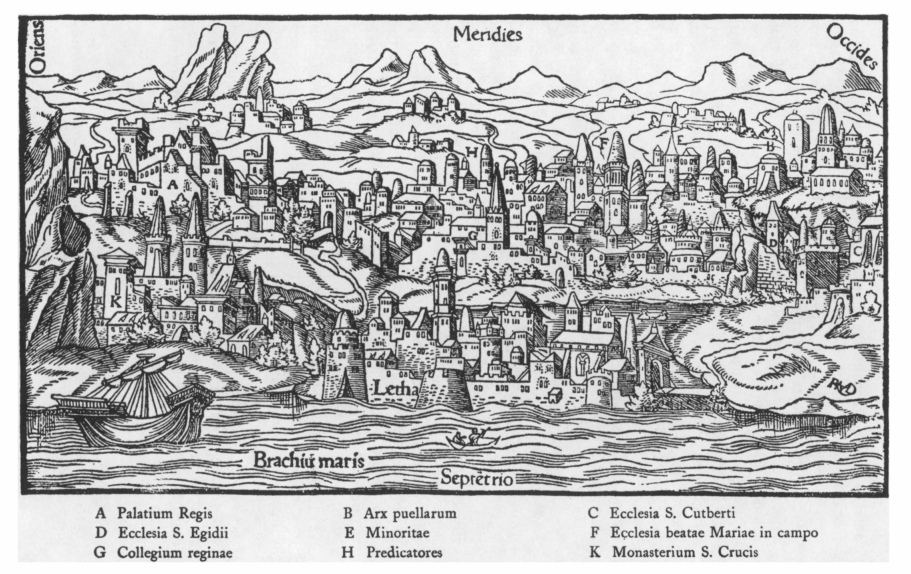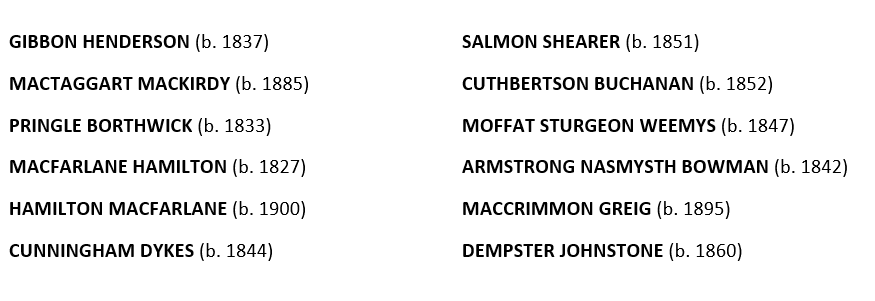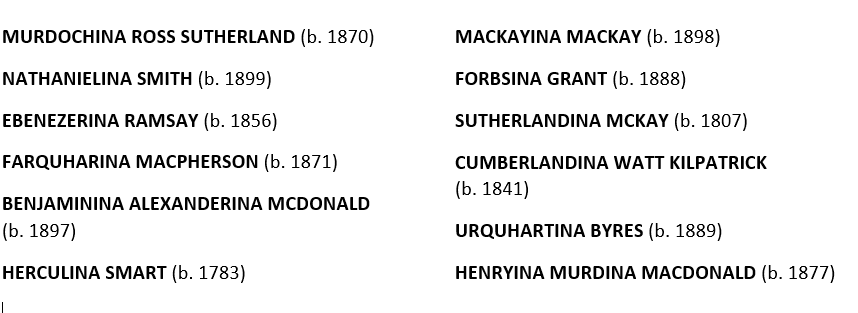n. the snuggest, most enclosed place you can think of.
Literally, ‘the corner of a corner’

n. the snuggest, most enclosed place you can think of.
Literally, ‘the corner of a corner’

The farm of Turniemoon was said to be the place where, every 28 days, the Calder witches met to turn the moon by hand, fearing that the switch to the Gregorian calendar in 1582 had confused the moon and that it might disappear from the night sky.

The name of the farm, near West Calder, is actually derived from Torr na Moine, Gaelic for “hill of the peat bog”, but I always prefer folk etymologies!
In the 16th century, Edinburgh was commonly known to the French as “Lislebourg” or “Liethbourg” (i.e. Leith Town).
Leith, on the other hand, went by “Petit Leith” (i.e. Wee Leith).

Writing a novel set in Victorian Scotland?
Need some baby name ideas?
Follow these simple rules for to get those quintessential genuine Scottish names.

Any last name can be a first name.

Any place name can be a first name.

Any name can have “-ina” added to it for a “female sounding” name.

Found a name you like? Use it liberally.

Fanna Shortbread (b. 1859)
Murder MacKenzie (b. 1865)
Shart Clark (b. 1887)
Neptune Blood (b. 1825)
Boglemary Robertson (b. 1783)
The 14th century chronicler Jean Froissart wrote in French. After travelling in Scotland, he invented French translations for Scottish places.
Edinburgh – HANDEBOURCH
Stirling – STRUVELIN
Roxburgh – ROSEBOURCH
Aberdeen – BREDANE
Fife – FII
Dalkeith – ALQUEST
Dundee – DONDIEU
Dumbarton – DOUBRETAGNE
Strathearn – ASTRADERN
Erskine – VERSI
Buchan – BOSQUEM
Sutherland – SURLANCKT
Moray – MORET
Jedburgh – GEDEOURS

The place with the longest name in Scotland rendered as one word was likely Drimtaidhvrickhillichattan on Mull.
Until the early 19th century, every August for 1 week, it held the largest fair in the West Highlands.
From Gaelic “Druim Taigh Mhic ‘ille Chatain” meaning ‘ridge of the house of the son of Gille Chatain’.
The Canmore site has more information on the fair and some aerial photos of the ruins.
There was a croft (today it’s a bothy) near Arrochar called Abyssinia.

Apparently, a man named Iain Mór (Big John) visited Abyssinia (Ethiopia), perhaps as a soldier, and wouldn’t shut up about it when he got back to Scotland. His friends started calling him “Abyssinia” to tease him and the nickname stuck.
“A’m awa tae Argyll for the day, Abyssinia!”
“No ye’ll no, A’m no leavin Glesca”


Seton Gordon. (1948) Highways and Byways in the Central Highlands. Macmillan and Co., London. pp. 36-37
Sunday Post. 4th August 1935. pg. 7